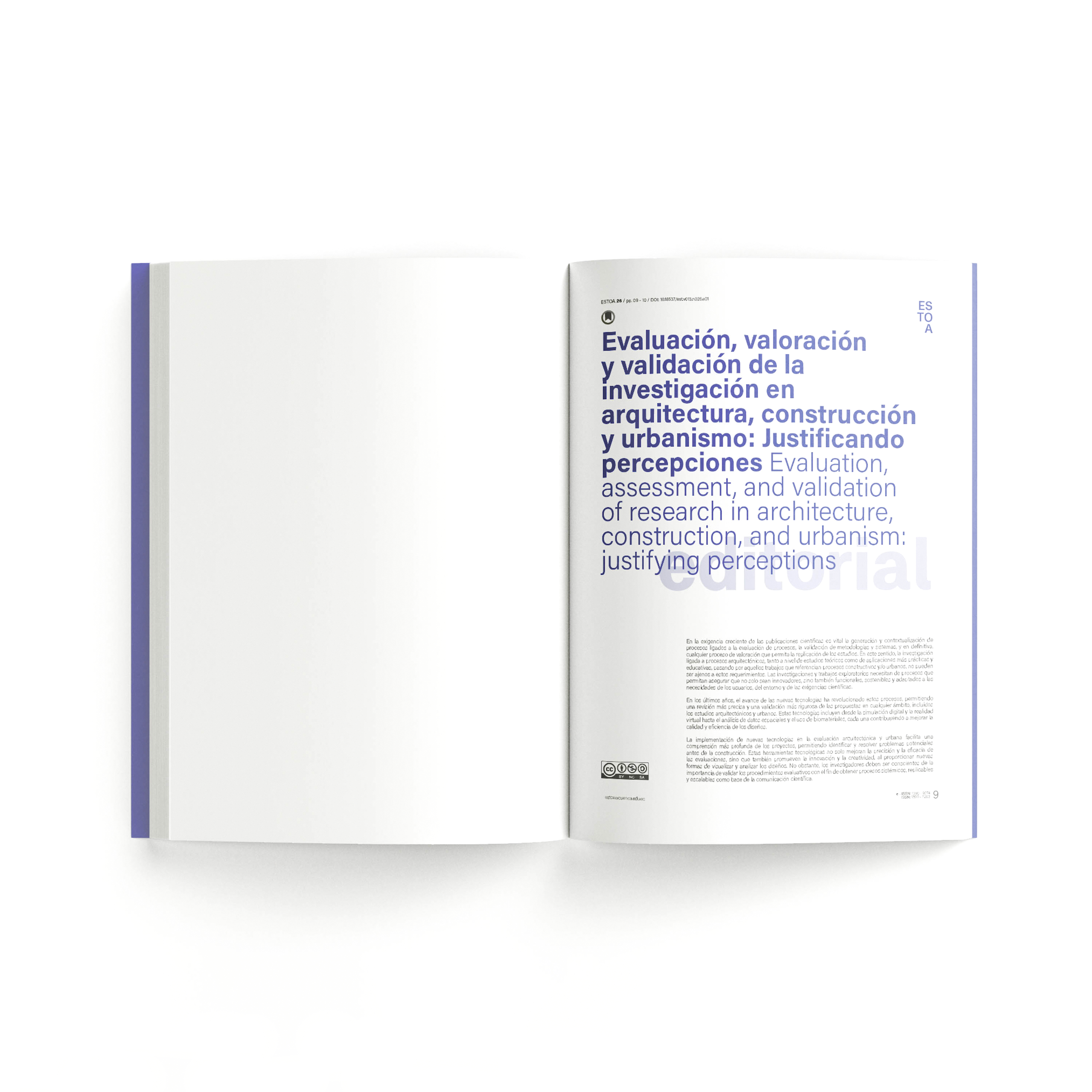Evaluation, assessment, and validation of research in architecture, construction, and urbanism: justifying perceptions
DOI:
https://doi.org/10.18537/est.v013.n026.e01Keywords:
evaluation, validation, technologies, architecture, sustainabilityAbstract
Estoa journal´s editorial emphasises the increasing importance of evaluation and validation processes in scientific publications, particularly in architectural research. It highlights the necessity of generating and contextualising processes to ensure replicability, functionality, and sustainability in research studies. The integration of new technologies, such as digital simulation, virtual reality, and biomaterials, has revolutionised these processes, enhancing the precision and rigour of evaluations. The journal's current issue focuses on the impact of these technologies on architectural and urban studies, presenting 16 diverse articles that explore various aspects of this transformation. Key themes include the application of innovative technologies in architecture, urbanism, and public policy, emphasising sustainability, bioclimatic efficiency, and heritage preservation. The editorial concludes by encouraging readers to reflect on improving evaluation processes and responsibly educating future generations to use these new technologies effectively. It underscores the critical role of precision, sustainability, and adaptability in modern society and the significant impact of technological advancements on architectural and urban environments.
Downloads

Downloads
Published
How to Cite
Issue
Section
License
Copyright (c) 2024 Estoa. Journal of the Faculty of Architecture and Urbanism

This work is licensed under a Creative Commons Attribution-NonCommercial-ShareAlike 4.0 International License.
The Journal declines any responsibility for possible conflicts derived from the authorship of the works that are published in it.
The University of Cuenca in Ecuador conserves the patrimonial rights (copyright) of the published works and will favor the reuse of the same ones, these can be: copy, use, diffuse, transmit and expose publicly.
Unless otherwise indicated, all contents of the electronic edition are distributed under a Creative Commons Attribution-NonCommercial-ShareAlike 4.0 International License.



